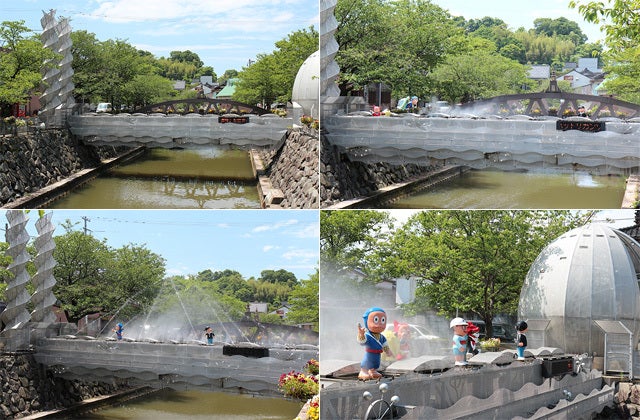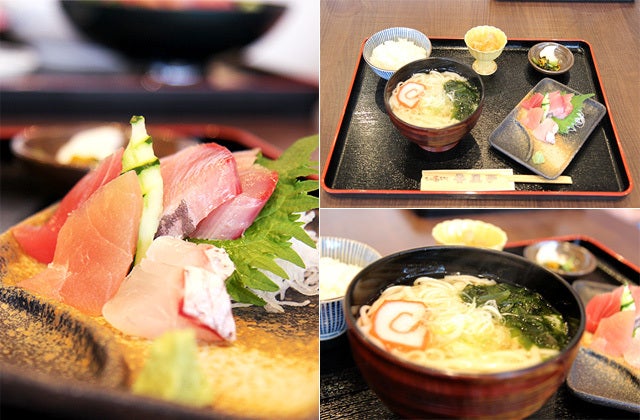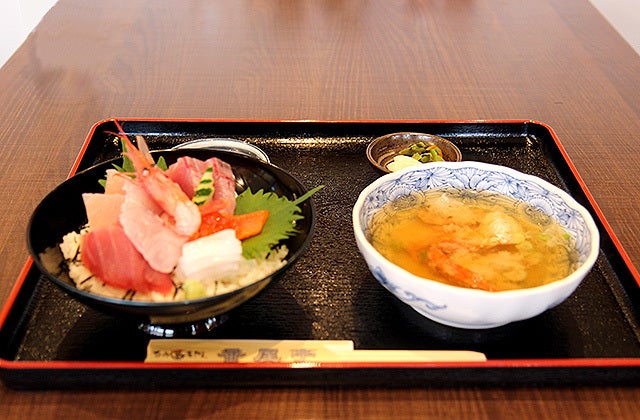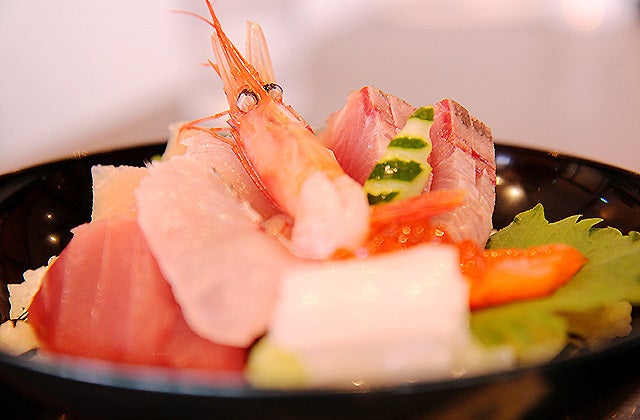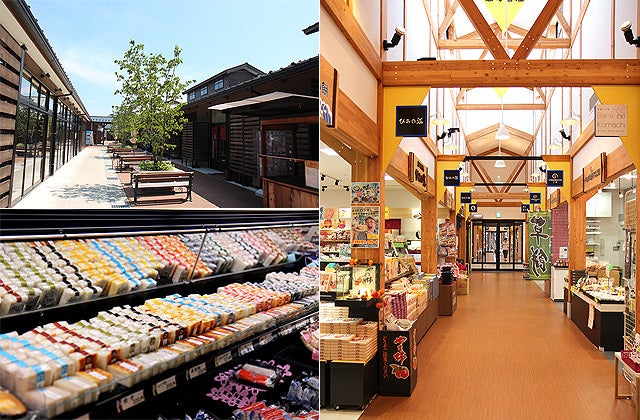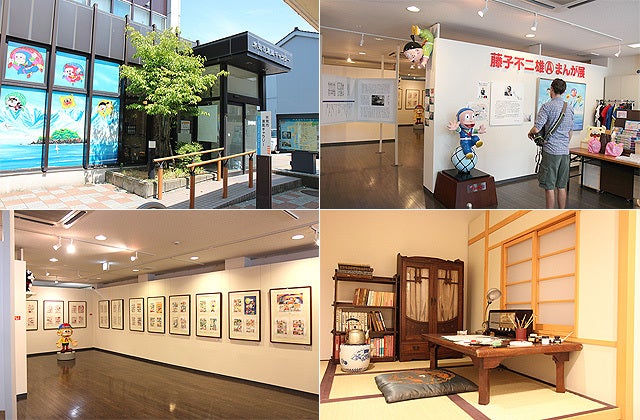A medium-sized fishing port in western Toyama, Himi is nationally renowned for producing some of the tastiest buri (ブリ, yellowtail) around, but there’s a little more to this town than that.
If you care about manga, you may have heard of Fujiko Fujio, the pen name for the pair of artists responsible for creating Doraemon and a variety of other less significant works. Both artists hail from Toyama Prefecture, with Abiko Motoo calling Himi his hometown. That being the case, Himi has decided to attempt a bizarre branding campaign, effectively turning the main section of town into “Fuziko World” (and for some reason using an embarrassingly incorrect romanization of “Fujiko”). Walk down the main commercial street in Himi and you’ll find yourself bombarded with talking statues of Ninja Hattori-kun, an apparently popular manga that I had never heard of before coming to Toyama. Doraemon is not really in evidence, I guess they couldn’t get the rights?
Anyway, more on that later. Imagine you’re starting from Himi Station, the northwestern terminus of the Himi Line that originates at Takaoka Station (30 minutes, ¥320, runs every 1–2 hours). Talk with the kindly folks at the station’s tourism information desk and they’ll rent you a bicycle (¥200, or ¥500 for an electric assist model). You’ll need to return your ride by 5pm, but you can do this at any of their three locations—Himi Station, Himi Banyagai, or Amaharashi Station.
Though we’re not stopping there today, the rocky Amaharashi Coast (雨晴海岸, Amaharashi-kaigan), backed by the mountains of Tateyama, is one of the more famous of the views in Toyama and definitely worth a go, especially on the rare day when it’s clear enough to actually see the mountains. Amaharashi Station is about 30 minutes ride from Himi, southeast back along the way you can by train.
Let’s head to the Himi Banyagai (氷見番屋街, but you may see signs calling it “Himi Travelers Rest Junction”), a recently constructed plaza for all things touristy in Himi. It’s due north from the station, about a 10 minute bike ride or a 20 minute walk.
But first, if the clock is about to strike an hour (noon, for example), the Minato-gawa Karakuri Clock (湊川からくり時計) is a strange diorama of Ninja Hattori-kun characters that popup and talk for five minutes, along with a water show. It’s bizarre.
Pedal north, young man! (Or woman, or gender neutral term of your preference, in this day and age.) Himi Banyagai is—let’s be frank—a tourist trap, albeit a well appointed one. On its north side is a little grassy knoll with a hot foot bath, possessing a view overlooking the bay and coastline. Personally, I was skeptical of public bathing of any sort for a long time, but I’ve really come around on the foot variety, especially on cooler days when my dogs are tired from walking or biking. Give it a go, it’s rejuvenating.
Lunchtime! There are no shortage of options. Less expensive are the various food court windows, which include ramen, curry, and other local fare. Rather expensive but also proportionally tasty is Himi-tei (氷見亭), a seafood teishoku (定食, “set meal”) restaurant. The seafood bowl (海鮮丼, kaisen-don) is what I came for (¥1900), while my companions seemed to rather enjoy the Himi udon set (¥1300, thinner noodles than typical udon) and the mixed fried set (¥1200, includes shrimp, oyster, and some sort of white fish).
Before or after your meal, you might as well peruse the shops peddling the conveniently-packaged local wares. On offer are a boggling array of seafood and seafood-adjacent products, all the way from small processed snacks to entire fish. Toyama is especially proud of their kamaboko (かまぼこ, savory steamed fish-cake) and it comes in all shapes, sizes, and flavors here.
You thought we were done with the manga stuff? It’s inescapable, especially if you hit the Himi City Shiokaze Gallery (氷見市潮風ギャラリー, ¥200, 10am–5pm), an old bank building converted into a small art gallery dedicated to Abiko Motoo (or, “Fujiko Fujio A”, his half of the confusing pen name). It’s an easy to miss building, tucked off the covered sidewalk. I’d tell you to look for the cartoon murals, but that’s useless advice in a town so intent on trying to convince you it’s run by 7 year olds. Anyway, check out the bank vault at the back of the first floor which now houses a replica of Abiko’s household workspace from back in the day.
So that’s “downtown” Himi. If you get a chance, I’d suggest visiting the fishing port and the coast line (which tends to be bike and pedestrian friendly). There’s even a bit of beach, such as they are in Japan. Who knows, maybe the haze will lift and you’ll even be able see the mountains.


